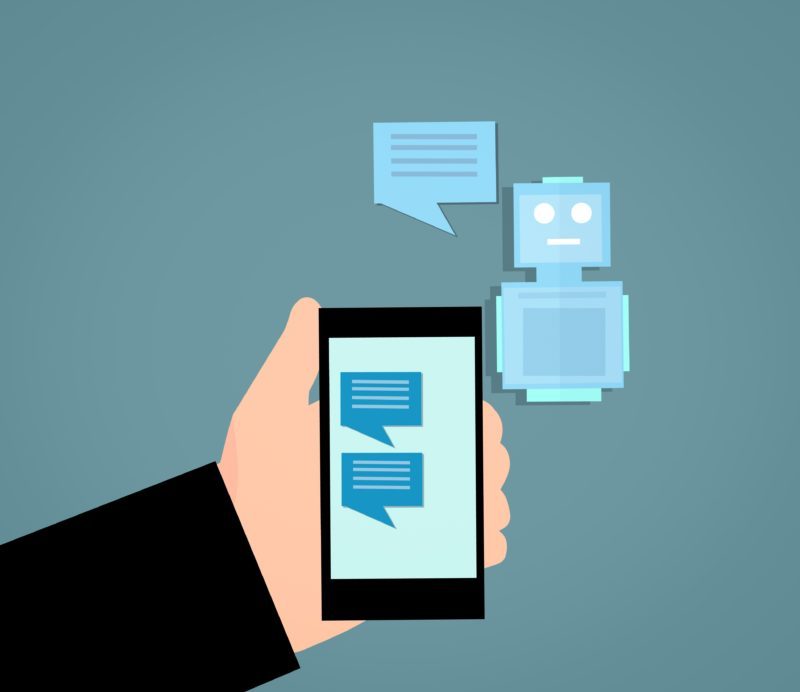Over time, chatbots are slowly becoming more and more effective, and companies that still think they’re better off without them are finding them harder and harder to ignore. The truth is, they’re gradually becoming irreplaceable, and can help you not only understand your customers better, but can even take the place of a de facto customer service assistant, always ready to take bookings or give information to those who seek it.
After seeing the impact bots have created in the B2C world, more and more are starting to try and keep up, and are identifying the ways they can fully utilise the functionality of bots best for their business. This, of course, opens up the discussion for how it can make money.
User Experience
Chatbots are useful to everyone, as long as you have an idea on what to do with it! If you can apply it to work for your area of business, it will work wonders. If you’re a restaurant owner, you can expect people asking about opening times, the menu, how to book a table and more, and setting these answers early can make your social media accounts look responsive and helpful. As well as this, you can add people to subscriber lists and monitor sales leads and customer interactions.
Having interactive features on your messenger page interests and engages customers, which increases the likelihood of a sale.
Response time
One of the largest issues with having human customer service agents is the response time. While it is possible to have 24/7 support, the cost is huge, and for any small to medium sized business, impractical. With a chatbot, you can have the glowing “replies almost instantly” proudly shown off on your Facebook page, without paying the workforce needed to achieve it. A chatbot responds immediately all the time, and doesn’t need a wage to do so, which is probably a good enough ROI on its own.
Let’s use an example:
Hypothetically, we have a small business, with 10 customer service reps. This office is open 9-5, and each member of staff can take around 10 calls in an hour, mostly being a couple minutes long. Each day, 800 calls would be coming through the office’s phones.
According to glassdoor.co.uk, the national average salary for a customer service rep is £20,340 per year, or just under £10 hourly. Using this information, we can work out that a call is essentially worth £1.
A hefty percentage of these calls will be general queries about stock, meetings, and other things a chatbot can take care of (we’ll estimate 50% but it could be even more.) This means we can half the amount of calls coming through, saving £400 per day. For a team of 10 people, that’s impressive.
Just to note, chatbots can never replace customer service staff entirely, but that was never the goal. The chatbot deals with simple enquiries, and only refers the customer to a colleague when there is a need for it.
In the right hands, a customer service agent can deal with many customers at once with a chatbot by their side.
A lot of customisation
As we’ve mentioned before, chatbots are extremely useful to every business, it’s just about utilising the features to suit you.
There are many small features and changes that can be made to make people more comfortable on your messenger page. Galleries to show off portfolios, contact buttons that call the number straight from your phone and a “leave a review” button are inconsequential but strong ways to improve every way customers interact with your page.
Having a simple “book an appointment” button on your messenger page can save a lot of time and effort for the customer and your workforce, and it will pay for itself over time.
Doesn’t require freshening up constantly
Online enquiry forms or website application forms can look outdated quickly. With chatbots, they look modern and will most likely continue to do so for as long as messenger is the platform of the world’s conversation.
Chatbots are tweaked slightly whenever there’s a change in a client’s site, but other than that, complete rehauls are uncommon. This will save a lot of money you’d otherwise put into web design.
A chatbot shouldn’t completely replace a page on your site, because you can always have both, but a chatbot is definitely more convenient for customers.
Ability to serve multiple clients at once
As we explained before, a single customer service agent can deal with a single customer. The one person per desk approach in the is overshadowed by chatbots, that are capable of responding to more or less infinite customers at once. This makes it possible for the company to expand the customer base without a huge upscale in customer service agents.
Potential
If you’d like to see how chatbots may look in the future, look no further than WeChat in China.
Founded in 2011 and owned by Tencent, WeChat is Chinese multi-purpose social media/ messaging app. It currently has 902 million daily users, and about 38 billion messages are sent on the platform every day. Their in-app chatbot can be used to do a multitude of things, including playing games, paying bills, checking in for flights, booking doctor appointments, filing police reports, booking taxis, checking their bank balance and more.
This is something that is extremely likely to catch on, so it’s a good idea to have at least a basic chatbot right now. Consumers love companies that are modern and always looking for ways to make it easier for them, and an ambitious company that implements all the new tech is definitely looked upon more positively.
Conclusion
Chatbots yield a huge amount of potential ROI, and it’s easier to obtain than a lot of business-owners think.
We believe messenger marketing is and will continue to be one of the main channels for marketing for the foreseeable future, so we’ve already implemented many chatbots into our clients’ sites.
We can also do the same for you! We will make sure your business is ahead of the curve, utilising this incredibly useful and efficient strategy to boost your tribe and brand effectively online.
Would you like to work together? Contact us here:

